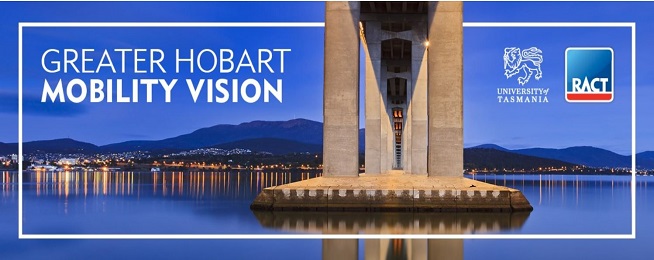The RACT is calling for ideas to improve greater Hobart’s traffic congestion now and into the future to help it put together a mobility vision for the capital city.
Bicycle Network has made a strong pitch for a network of separated cycleways through the city, to give people more transport choices.
Separated cycleway networks have been found to get many more people riding than just painted bike lanes alone in cities where they’ve been implemented.
The combination of separated cycleways and electric bicycles could get people out of cars for trips of up to 10 kilometres.
Infrastructure Australia recently put a plan for a 284 kilometre separated cycleway network in Sydney on its initiative priority list for its potential to reduce traffic congestion.
IA found that by shifting just five per cent of Sydney’s 1 million daily trips taken by car within 10 kilometres of the CBD to bike riding or walking, 50,000 motor vehicle trips would be avoided.
The census found that 1.5% of trips to work in greater Hobart were by bicycle and 2.2% in the Hobart council area.
Cycleways in Hobart
In Hobart, we’ve got well used off-road paths but the lack of separated connectors once people arrive at the city deters some potential riders.
Connecting the Rivulet Path and Intercity Cycleway with separated cycleways through the city would give people the option of riding to and from work, university, school and services without having to mix with motor vehicles.
Converting the painted lanes on Sandy Bay Road to a separated cycleway would give people more commuting options as well as creating safer pathways for students to get to school and university.
Eastern shore riders deserve better than the current narrow paths on the Tasman Bridge and separated cycleways are needed on main commuter routes like Clarence Street.
Infrastructure alone won’t help everyone who wants to ride, other ideas that could be put forward to the RACT include:
- end-of-trip facilities in all city buildings over a certain size/occupancy. The state government promised a version of this at the last election but we haven’t seen any movement yet.
- public bicycle parking and end-of-trip facilities. Brisbane has the King George Square Cycling Centre where riders can securely park their bike, have a shower, pick up drycleaning and get repairs done.
- dedicated cycling promotion that helps improve attitudes to bike riding, provide learn to ride classes, and publish easy to use maps.
- public and business-based share bike schemes that give people the opportunity to jump on a bike for short distances or if they are visiting.
- government incentives for people to buy or lease electric bicycles. These have been used extensively in Europe to help people choose bicycles over cars.
- tax incentives for businesses and individuals to buy and use bicycles instead of cars.
- priority for cyclists at traffic signals.
- remove on-street parking on selected streets to make room for dedicated bus lanes and separated cycleways.
RACT process
You can participate in the RACT process by completing the short online survey or providing a submission with your idea/s for change.
Submissions are due by Friday 28 September, when they will go to a panel of experts to assess. Members of the panel include experienced planning professionals such as Professor Jason Byrne from the University of Tasmania and Steven Burgess from MRCagney.
The shortlisted ideas will be presented at a public forum later this year and the RACT will develop the proposals into a vision which it will use as the basis for its advocacy activities.


